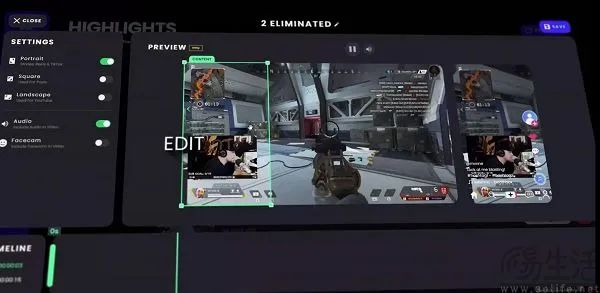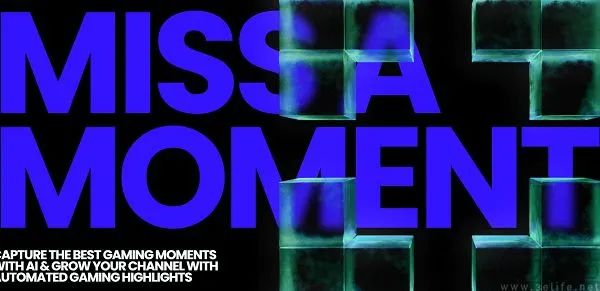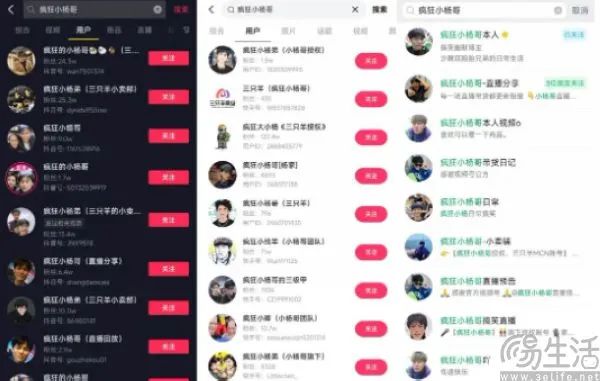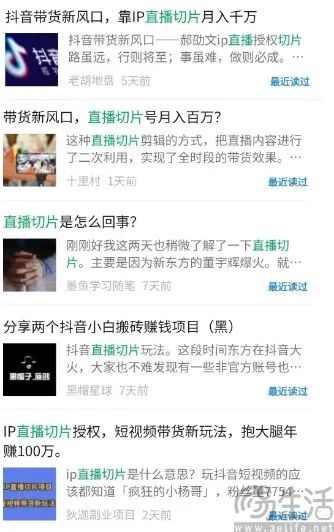Source: San Yi Life

Image source: Generated by Wujie AI
If you want to make money on the internet, the term "live broadcast clipping" is probably not unfamiliar to you. Nowadays, it has even become a new direction for making money online. The slogan of making tens of thousands of yuan a month by live broadcast clipping can be easily found on the internet, and even top anchor "Crazy Little Yang Brother" on Douyin has launched the "Zhongxiaoer" app to industrialize live broadcast clipping. However, the currently popular live broadcast clipping may soon be hit by AI.

Recently, a AI video stream editing tool called Capturelab has quietly become popular overseas. This automated tool for gaming scenes helps anchors quickly identify exciting moments and highlights during live broadcasts, and then automatically edits out the highlights using AI, and can quickly share the edited clips to major social media platforms, and even earn income through relevant advertising distribution platforms.
So why is Capturelab said to be the "destroyer" of live broadcast clipping? Although live broadcast clipping in the domestic market mainly targets e-commerce live broadcasts rather than gaming live broadcasts, Capturelab currently only supports gaming live broadcasts, but the underlying logic of the two is obviously similar. Live broadcast clipping is not exclusive to Douyin and Kuaishou. There are also various UP masters on Bilibili whose main business is to produce live broadcast clipping content.

The existence of live broadcast clipping is beneficial to every participant in the content production chain. Unlike short videos, live broadcasts are more similar to long videos, often lasting for several hours or even longer. Therefore, continuous interaction with the audience during such a long time is a huge challenge for anchors, and it also leads to anchors "slacking off." So when the content of a live broadcast is limited, live broadcast clipping can help viewers who missed the live broadcast quickly discover the highlights, which is the basis for live broadcast clipping to attract traffic.
Similarly, due to the energy consumption brought by the high interactivity of live broadcasts, anchors cannot maintain a high-intensity live broadcast state all the time. Therefore, granting the copyright of live broadcast replays to other creators means that these creators can help maintain the influence of the anchors and maintain their popularity on the platform. Therefore, top anchors are often willing to grant live broadcast clipping authorization in order to use such content to make their live broadcasts seen by more users and help consolidate their commercial value from another perspective.

Since live broadcast clipping essentially involves the secondary operation and sale of live broadcast content, it also involves the distribution of revenue from product sales. After all, the use of the anchor's image rights or influence to monetize the clipping means that such authorizations often come with a certain revenue sharing. For example, "Crazy Little Yang Brother" previously revealed that more than 11,000 people obtained clipping authorizations from San Zhi Yang in 2022, with an average income of 17,000 yuan per person. If we use the 30% split ratio, it means that San Zhi Yang may have earned 330 million yuan solely from clipping authorizations.
Yes, San Zhi Yang charges a 70% fee for the authorization, rather than the 30% charged by platforms such as the App Store, Google Play Store, and Steam. The reason for this is easy to understand, after all, these app/game stores only provide a distribution channel, and the real money is made by the developers' intellectual property. In live broadcast clipping, the traffic of top anchors is the "core," and the creators of clipping content are essentially hitching a ride on these anchors.

In today's internet industry, where the dividend of traffic is no longer available, the success rate of internet celebrities has actually become lower. And most people want to become internet celebrities to make money. Now, just like finding shade under a big tree, you can also make money through live broadcast clipping authorizations. However, although live broadcast clipping seems promising, why are there not many people who can really succeed in this business?
This is because clipping and editing itself is an extremely time-consuming task. A live broadcast often lasts for several hours, and it is not easy for creators to edit out quality and content-rich clips from it. Unlike film editing, the difficulty of live broadcast clipping can be said to be geometrically higher. After all, film and television dramas are based on scripts, and the narrative structure represented by the classic Hollywood three-act structure makes it easy for creators to distinguish the climax. This is one of the core reasons why there are far fewer live broadcast clippers than film and television editors.

To edit exciting clips from a narrative with unclear logic in a live broadcast, there is currently a lack of a universal paradigm, so the only way at this stage is to spend time and manpower to discover highlights frame by frame. This is also why the training courses for live broadcast clipping are often aimed at housewives and college students, because these groups have relatively more free time.
In essence, live broadcast clipping, like data annotation, is "screwing screws" on the internet, and it can be said to be purely physical work, but such mechanical and rigid work is obviously the easiest to be replaced.
The core competitiveness of live broadcast clipping lies in being the first to edit and publish exciting content among the competitors who have obtained authorizations from top anchors, and it is all about the time difference. According to Capturelab, using this tool can analyze a 10-hour video stream in 1 hour, which is undoubtedly a leap in efficiency. And using machines to replace manual work has happened countless times in the internet industry.

Even though Capturelab currently only targets gaming live broadcasts, with the training speed of large models, switching to other types of live broadcasts only requires feeding data and fine-tuning the model. For live broadcast clipping, the addition of AI will obviously be more appealing to MCNs, because Crazy Little Yang Brother's San Zhi Yang and other MCNs do not necessarily have to authorize live broadcast clipping to other creators, but simply because it is not cost-effective for them to do it themselves, so they have to distribute it in the form of outsourcing.
Furthermore, taking back live broadcast clipping authorizations will also change the current chaotic situation of homogenization in this field. A large number of accounts crowding into the same live broadcast to find highlights will inevitably produce highly similar content, which may in turn affect the commercial value of the anchors. If AI is involved, what used to require hundreds or thousands of people for live broadcast clipping may now be accomplished by just a few, so why should MCNs authorize content to unrelated individuals?
So, it's not just talk when it comes to AI video stream editing tools changing live broadcast clipping.
免责声明:本文章仅代表作者个人观点,不代表本平台的立场和观点。本文章仅供信息分享,不构成对任何人的任何投资建议。用户与作者之间的任何争议,与本平台无关。如网页中刊载的文章或图片涉及侵权,请提供相关的权利证明和身份证明发送邮件到support@aicoin.com,本平台相关工作人员将会进行核查。




